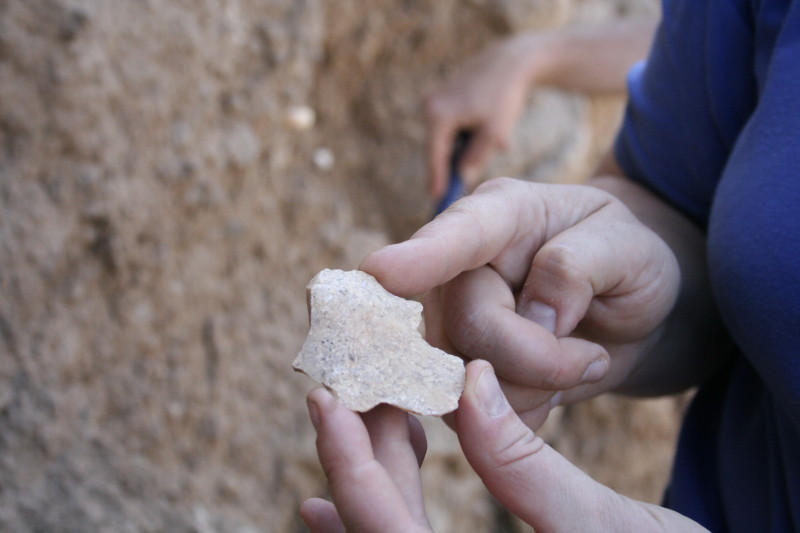
Archaeologists working in Turkey have unearthed a 1.2-million-year-old stone tool.
The new tool, a flaked piece of quartz discovered in the town of Gediz, is the oldest reliable evidence of ancient humans living in what is now Turkey. The piece could help scientists recreate early humans' migrations from Africa.
"This discovery is critical for establishing the timing and route of early human dispersal into Europe," study author Danielle Schreve, an archaeologist at the Royal Holloway University of London, said in a statement. "Our research suggests that the flake is the earliest securely-dated artifact from Turkey ever recorded and was dropped on the floodplain by an early hominin well over a million years ago."
Ancient intelligence
Stone tools are some of the longest-lasting evidence of ancient human culture, and their workmanship can reveal much about the intelligence and lifestyle of human ancestors. The oldest stone tools are about 2.6 million years old, and the style of their workmanship is called Oldowan, after the Olduvai Gorge in Tanzania where they were found, according to the Smithsonian Museum of Natural History. Later, about 1.7 million years ago, ancient hominins such as Homo erectus began making more sophisticated tools, such as hand axes, scrapers and flaked tools. [Denisovan Gallery: Tracing the Genetics of Human Ancestors]
Although many flaked tools have been discovered in Turkey, most were in sediments that couldn't be reliably dated.
The new finding comes after Schreve and her colleagues began taking a second look at the Gediz valley, where other artifacts had been discovered. One site where the researchers looked was a place where an ancient river twisted slightly,
Sign up for the Live Science daily newsletter now
Get the world’s most fascinating discoveries delivered straight to your inbox.
"The flake was an incredibly exciting find," Schreve said. "I had been studying the sediments in the meander bend and my eye was drawn to a pinkish stone on the surface. When I turned it over for a better look, the features of a humanly-struck artifact were immediately apparent."
The team analyzed the ratio of Argon isotopes (atoms of the same element with different numbers of neutrons) in lava flows that periodically crept into the valleys of the region. They also looked at the compass orientation of the magnetic minerals within the regions' rocks. At different times in Earth's history, the poles have wandered, so the orientation of those minerals can reflect the location of the poles at the time.
By combining these two measurements, the team estimated that the stone tool they found was between 1.17 and 1.24 million years old. The only other contemporaneous evidence of Homo erectus inhabitance in the region is an ancient skull that was uncovered in Kocabaş, Turkey, whose age is uncertain. A recent study suggested the skull is between 1.1 and 1.3 million years old, although early estimates have put the fossil at just 500,000 years old, according to a March 2014 study in the journal Earth and Planetary Science Letters.
By providing accurate dating for hominin presence in the region, the findings could help scientists reconstruct the ancient path that early humans took from Africa.
The findings were published online in the February 2015 issue of the journal Quaternary Science Reviews.
Follow Tia Ghose on Twitter and Google+. Follow LiveScience @livescience, Facebook & Google+. Originally published on Live Science.

Tia is the managing editor and was previously a senior writer for Live Science. Her work has appeared in Scientific American, Wired.com and other outlets. She holds a master's degree in bioengineering from the University of Washington, a graduate certificate in science writing from UC Santa Cruz and a bachelor's degree in mechanical engineering from the University of Texas at Austin. Tia was part of a team at the Milwaukee Journal Sentinel that published the Empty Cradles series on preterm births, which won multiple awards, including the 2012 Casey Medal for Meritorious Journalism.









